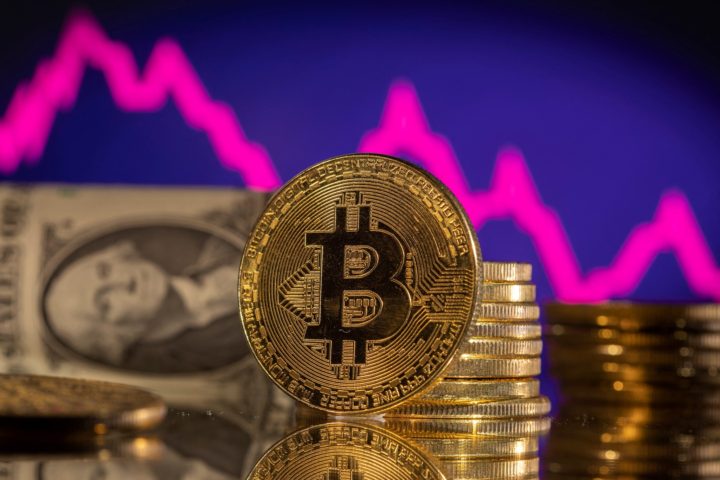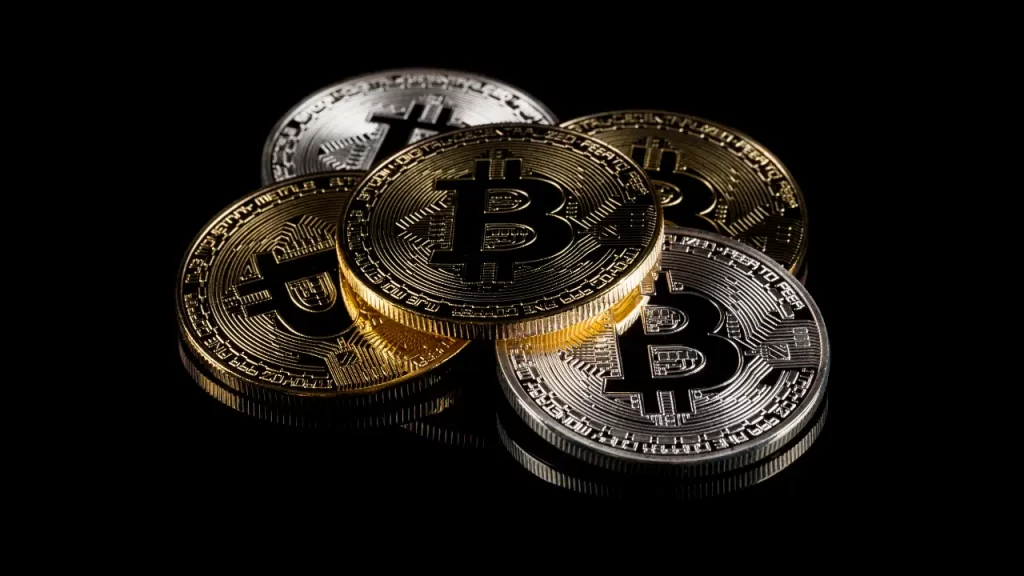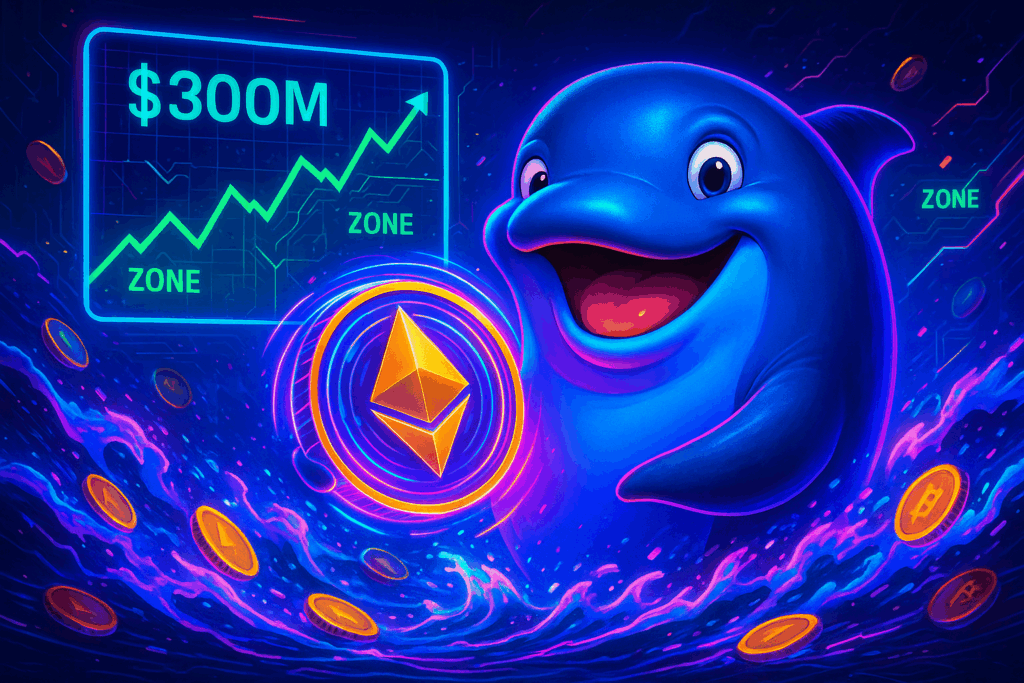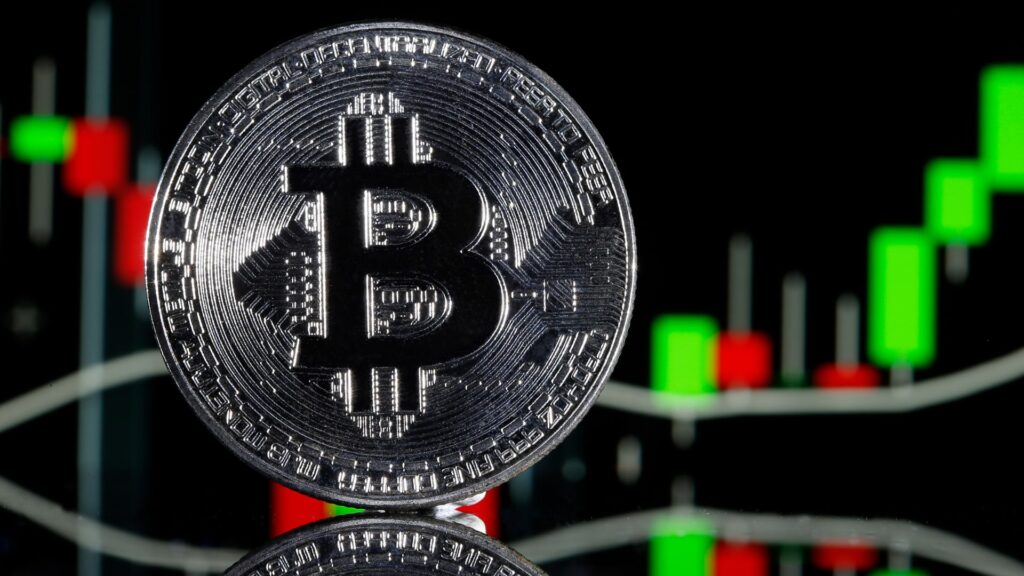ARK Invest CEO Cathie Wood has drawn a parallel between Hyperliquid and Solana’s early rise, calling the decentralized exchange “the new kid on the block.”
“It’s exciting. It reminds me of Solana in the earlier days, and Solana has proven its worth and is, you know, there with the big boys,” Wood said during a recent interview on the Master Investor podcast.
Wood explained that while ARK Invest has not disclosed any holdings in Hyperliquid, the protocol’s growth is one she is closely monitoring. Her comments come at a time when competition among perpetual futures decentralized exchanges (DEXs) is intensifying. Aster, another player in the space, launched its token earlier this month and has already seen its trading volume and open interest surpass Hyperliquid’s.
ARK Invest’s Focus on Core Assets
ARK Invest currently maintains exposure to three major cryptocurrencies across its public funds: Bitcoin (BTC $111,777), Ethereum (ETH $4,118), and Solana (SOL $210.18). Wood noted that the firm’s Solana exposure is connected to Breera Sports, which is tied to the Solana treasury and backed by Middle Eastern investors. She added that economist Art Laffer has advisory links to the project.
While the fund has diversified into some derivative protocols like Uniswap and Solana-related markets, Wood stressed that its core focus remains narrow by design. “If you’re talking about the big boys or girls, those are the big three right now,” she said.
Bitcoin’s Enduring Dominance
Despite the explosion of tokens and new protocols, Wood argued that the long-term future of crypto belongs to a select group of networks. “We don’t think there are going to be very many cryptocurrencies,” she said. “Bitcoin owns the cryptocurrency space when it comes to pure crypto.”
Wood emphasized Bitcoin’s role as a monetary system with a fixed supply and resilience, contrasting it with Ethereum’s role powering decentralized finance. She also noted the growing importance of stablecoins but reiterated that Bitcoin remains central to ARK’s long-term thesis.
Retail and Quant Traders Drive DEX Growth
According to Bitget Wallet’s chief marketing officer Jamie Elkaleh, decentralized exchanges like Hyperliquid are seeing a surge in activity from retail traders and semi-professional quants. Incentives such as airdrops, low fees, and fast execution are helping drive this shift.
Institutions, however, still prefer centralized exchanges for their fiat access, compliance, and brokerage support. Yet the performance gap between DEXs and CEXs is narrowing, with order-book platforms such as Hyperliquid and dYdX v4 now offering execution speeds and liquidity previously limited to centralized venues.
XRP’s price action is sitting at a critical juncture, with the altcoin consolidating at the base of a descending triangle — a pattern that often signals bearish pressure.
The token hovered around the $2.75 support level on Friday, but analysts warned that sustained selling could push prices down toward the $2.65 to $2.45 range.
Such a move would represent an 8% to 10% decline, coinciding with a daily fair value gap (FVG) overlapping the 0.50–0.618 Fibonacci retracement levels.
This area could act as a liquidity magnet while offering a potential springboard for a bullish recovery.
Onchain Data Signals Strong Buyer Interest
Onchain metrics support the view that XRP may be approaching an important liquidity pocket.
Glassnode’s Unrealized Price Distribution (URPD) showed a dense cluster of buyers between $2.45 and $2.55, indicating a strong cost basis for many holders.
If price returns to this range, buyers may defend it aggressively, potentially laying the groundwork for a rebound.
The altcoin’s current behavior mirrors its fractal pattern from the first quarter.
XRP has already tested the $2.65 mark twice, but historical price structures suggest a sweep below this level into the liquid-heavy FVG could occur before a sustainable rally emerges.
Repeating Patterns Could Lead to Volatility
Market watchers have noted similarities between today’s setup and earlier fractals.
Previous patterns showed weakness heading into the weekend, followed by an FVG sweep early the following week.
If this plays out again, XRP could revisit the $2.50 zone as soon as Monday.
However, analysts caution that historical fractals do not guarantee a repeat performance.
A decisive break above $2.90 could invalidate the bearish structure altogether, but current momentum still favors one last dip into the $2.50 area.
Compression and ETF News Fuel Uncertainty
Sistine Research observed that XRP may be entering a significant expansion phase in the coming months.
The analysis highlighted how XRP’s tight price action over the past 10 weeks has compressed its order book, leaving larger gaps between levels.
This marks the third compression phase since the US elections in November 2024 and the tightest so far, built on three consecutively higher price points.
Such conditions have historically preceded sharp breakouts as built-up liquidity is released.
Crypto analyst Pelin Ay pointed to spot market flows as evidence of the battle between buyers and sellers.
The 90-day spot taker CVD indicates that sellers remain in control despite brief bursts of buyer strength earlier in 2025.
A sustained upside move will require a decisive shift in volume from buyers, which has yet to materialize.
Meanwhile, ETF news adds another layer of uncertainty.
Franklin Templeton’s XRP ETF decision has been postponed until Nov. 14, while REX/Osprey’s XRPR product debuted with nearly $38 million in first-day volume.
Analysts warn that optimism may already be priced in, heightening the risk of a “sell the news” reaction when decisions are finalized.
The FTX Recovery Trust has confirmed plans to distribute a new round of reimbursements to creditors, marking another significant milestone in the ongoing effort to compensate those impacted by the collapse of the exchange.
The entity, which was established to handle repayments after the platform’s bankruptcy, said the latest tranche will be worth around $1.6 billion. The distribution is scheduled for September 30, with creditors expected to see funds arrive in their accounts within three business days of the payment date.
Breakdown of September’s Distribution
According to details shared by the trust, the payout will be distributed across different categories of claims.
Dotcom Customer claims will receive a 6% payout.
US Customer Entitlement Claims will see a 40% distribution.
General Unsecured Claims and Digital Asset Loan Claims will receive a 24% share.
Convenience claims, which are capped at smaller amounts, will benefit from a 120% reimbursement as part of this latest tranche.
This distribution follows two earlier payouts, which began earlier this year.
In February, the trust released $1.2 billion to claimants, followed by a much larger $5 billion payout in May.
Assets Set Aside for Creditors
The FTX Recovery Trust has earmarked up to $16.5 billion to settle claims from creditors and former customers.
The scale of these reimbursements reflects both the size of the exchange prior to its downfall and the magnitude of losses suffered when the company entered bankruptcy.
The collapse of FTX in 2022 had a seismic effect on the cryptocurrency market.
The event deepened the bear market that was already underway, eroding confidence in digital assets and sparking greater scrutiny from regulators worldwide.
Even today, traders and investors watch developments around repayments closely, given the potential impact large inflows of capital back into the market could have on prices.
Sam Bankman-Fried’s Conviction and Appeal
The downfall of FTX has been closely tied to its former chief executive, Sam Bankman-Fried.
In November 2023, he was found guilty on seven charges, including wire fraud, wire fraud conspiracy, securities fraud, commodities fraud conspiracy, and money laundering conspiracy.
He was sentenced in March 2024 to 25 years in prison.
Judge Lewis Kaplan, who presided over the trial, described Bankman-Fried’s actions and the collapse of the exchange as a “serious” crime that justified decades of imprisonment.
Bankman-Fried’s attorneys are preparing to appeal the conviction this November.
They have argued that he did not receive a fair trial, claiming he was effectively treated as guilty from the start.
The defense has also asserted that FTX was not truly insolvent and that the company had sufficient funds to meet its obligations and repay customers.
Market Implications
With the third payout approaching, speculation continues over how these distributions might influence the wider crypto sector.
Some analysts believe creditors receiving significant amounts of cash could lead to renewed investment in Bitcoin and other digital assets.
Others caution that creditors may simply choose to exit the market altogether, pocketing their reimbursements instead of reinvesting.
Either way, the September distribution represents another step forward in one of the most closely watched bankruptcies in recent financial history.
Spot Bitcoin exchange-traded funds (ETFs) saw net inflows of $332.7 million on Tuesday, reversing recent trends and outpacing Ethereum ETFs, which recorded $135.3 million in net outflows, according to SoSoValue data.
The latest movement underscores shifting investor sentiment between the two largest cryptocurrencies.
Bitcoin Gains Institutional Support
Fidelity’s FBTC led the inflows, securing $132.7 million.
BlackRock’s IBIT followed with $72.8 million, while other firms, including Grayscale, Ark 21Shares, Bitwise, VanEck, and Invesco, also registered inflows.
The rebound comes at a time when Bitcoin’s reputation as “digital gold” is gaining renewed traction among institutional investors.
“Bitcoin is once again attracting institutional flows as its digital gold narrative regains traction,” said Vincent Liu, chief investment officer at Kronos Research.
Ethereum Takes a Hit
By contrast, Ether ETFs faced significant withdrawals.
Fidelity’s FETH lost $99.2 million, while Bitwise’s ETHW shed $24.2 million.
This marked a sharp reversal from August, when Ethereum funds attracted $3.87 billion, compared to $751 million in outflows from Bitcoin ETFs.
Ether products also recorded $164 million in outflows on Friday, further adding to recent losses.
Market Sentiment Shifts
Analysts say the divergence reflects broader macroeconomic uncertainty.
“With gold at all-time highs, appetite for hard assets is clearly strengthening,” Liu explained.
“In this environment of macro uncertainty, BTC is standing out against ETH, which appears to be entering a period of profit-taking,” he said.
Liu suggested that if volatility persists across global markets, Bitcoin could continue to outperform Ethereum thanks to its perceived safe-haven qualities.
Crypto Funds Recover
The shift in flows comes as crypto investment products overall rebounded strongly.
Last week, funds posted $2.48 billion in net inflows, recovering from $1.4 billion in outflows the previous week.
August ended with $4.37 billion in inflows, lifting year-to-date figures to $35.5 billion, a 58% increase compared to 2024.
Despite the rebound, assets under management dropped 7% week-over-week to $219 billion, showing that volatility remains a key factor in the sector.
Ethereum endured a wave of forced selling this week, with more than $300 million in liquidations striking within hours.
The sharp reset rattled traders but has also carved out new technical buy zones around $4,500–$4,650. Analysts now describe the event as a leverage “clean-out” phase that could set up fresh accumulation opportunities as markets stabilize.
At the same time, some investors are diversifying into safer, audited presales like MAGACOIN FINANCE, which is drawing strong early demand as Ethereum works through short-term volatility.
Whale Liquidations and Market Reset
Data showed Ethereum’s liquidation total at $322.85 million, marking the largest single-day shakeout of the week. Long positions accounted for the bulk, with $279.79 million wiped as whales and over-leveraged traders were caught in a Bitcoin-led flash crash.
The cascade dragged ETH to a local low near $4,518 before partial recovery lifted it back toward key support.
Market observers note that liquidation-driven resets are common in crypto cycles. They act as a flush of speculative positioning, clearing excess leverage and creating space for more sustainable upside.
For Ethereum, this reset has reinforced its role as a macro asset that is still subject to rapid, liquidity-driven moves despite its growing institutional presence.

Buy Zones and Technical Levels
Attention has now turned to accumulation ranges. Analysts are identifying the $4,500–$4,650 band as a crucial support cluster. Holding this zone would provide an attractive risk-reward setup for staged entries, while a sustained close above $4,650 is being watched as a momentum trigger.
Upside targets for September sit at $4,800–$5,060 if momentum reasserts itself. On the downside, a break below $4,500 could offer deeper accumulation opportunities but would also test investor conviction. Traders are framing this volatility as a tactical environment, emphasizing tight stop losses and adaptive positioning.
Macro and Seasonal Factors
Beyond technical levels, macro drivers remain central to Ethereum’s trajectory. The Federal Reserve’s expected rate adjustments, combined with ongoing ETF inflows, will influence liquidity conditions.
At the same time, Ethereum’s network upgrades continue to underpin long-term confidence by improving scalability and reducing transaction costs.
Seasonality also plays a role. August and September historically deliver “reset and rebound” patterns in crypto markets, as whale-driven liquidations often precede renewed inflows. Market makers are monitoring whether this year’s reset follows that same rhythm.
MAGACOIN FINANCE — Presale Alternative Gains Momentum
While Ethereum consolidates, speculative capital is rotating into early-stage plays. MAGACOIN FINANCE has been singled out by analysts as the standout legitimate presale of 2025, with forecasts calling for outsized returns and allocations beginning to tighten.
The liquidation wave in ETH has highlighted how quickly conditions can flip for established assets, adding to the appeal of presales that promise exponential upside without leverage exposure.
Momentum around MAGACOIN FINANCE is building, with investor sentiment increasingly framing it as the “best crypto to buy now.” FOMO is rising as early participants move to secure allocations, positioning ahead of what some expect could be one of the cycle’s breakout tokens.

Conclusion — Reset Creates Opportunity
Ethereum’s $300 million liquidation cascade underscores both its risks and its resilience. The flush has carved out buy zones around $4,500–$4,650, giving disciplined investors clear technical markers for accumulation and upside targets if momentum returns.
At the same time, presale opportunities like MAGACOIN FINANCE are gaining ground as investors diversify their strategies between blue-chip assets and high-upside alternatives. Together, these dynamics highlight how volatility not only resets leverage but also reshapes where smart money positions for the next cycle.
To learn more about MAGACOIN FINANCE, visit:
Website: https://magacoinfinance.com
Twitter/X: https://x.com/magacoinfinance
Telegram: https://t.me/magacoinfinance
Bitcoin tumbled below $108,000, marking its lowest level in 50 days.
The drop triggered $137 million in liquidations of leveraged long positions, catching traders off guard.
The decline followed weakness in the Nasdaq 100, which fell 1.2% amid doubts over the long-term strength of the artificial intelligence sector.
Trade Deficit Adds to Investor Concerns
Market sentiment worsened after the U.S. reported a 22% jump in its July trade deficit.
The gap between imports and exports widened to $103.6 billion, exceeding forecasts.
Economists warned this could drag on economic growth in the third quarter, adding to uncertainty.
Insider Sales Signal Caution
Investor unease deepened after data revealed an unusual trend in insider trading activity.
X user Malone_Wealth noted that the top 200 trades by executives and large shareholders last week were all sales.
Major moves included Walmart’s Jim C. Walton with $961 million, Snowflake’s Frank Slootman at $164 million, and Amer Sports’ Dennis J. Wilson with $160 million.
Other significant sales included Dutch Bros’ Travis Boersma at $81.5 million and Klaviyo’s Andrew Bialecki at $73.7 million.
Chinese Banking Stress Adds Pressure
China added another layer of concern.
Its five largest banks reported record-low margins and rising delinquencies, with retail banks writing off $5.2 billion in bad loans in the first quarter—an eightfold jump year-on-year.
The figures highlighted mounting risks in the Chinese financial system.
AI Sector Weakness Intensifies
Meanwhile, the artificial intelligence sector is showing signs of strain.
Nvidia revealed that nearly half of its data center revenue comes from just two customers, raising questions about reliance.
Despite delivering solid quarterly results, Nvidia shares fell 4.7% over two sessions.
Super Micro Computer, a major Nvidia partner, added to concerns by warning of potential issues in its financial reporting.
Its shares dropped more than 5% as a result.
Bonds Reflect Risk Aversion
In the bond market, investors sought safety in U.S. Treasurys.
The two-year yield fell to 3.62%, its lowest level in four months and down from 3.80% the week before.
This decline suggests growing risk aversion, as investors preferred lower yields in exchange for security.
Outlook for Bitcoin
Alongside these global risks, Bitcoin faces its own pressures.
Long-dormant whales have been selling, while miners continue steady outflows.
Despite these factors, analysts suggest the broader macroeconomic picture remains the primary driver of Bitcoin’s latest decline.
With traders cautious ahead of the U.S. national holiday, volatility could remain elevated in the coming sessions.
Japan’s Finance Minister Katsunobu Kato has publicly acknowledged that cryptocurrencies should be considered as part of diversified investment portfolios.
Speaking at Web3 Conference WebX 2025 in Tokyo, Kato said crypto could be a legitimate asset class if proper rules are in place.
“While crypto assets carry the risk of high volatility, by establishing a proper investment environment, they can become an option for diversified investment,” Kato told attendees.
He emphasized that Japan will focus on building a sound trading environment for digital assets as adoption expands.
The remarks marked one of the most direct endorsements of crypto by a sitting Japanese finance minister.
Push for Tax Reform
Kato’s comments follow renewed calls from Japan’s Financial Services Agency (FSA) to overhaul crypto taxation rules.
Currently, crypto gains fall under “miscellaneous income” and are taxed at rates ranging from 15% to 56% depending on the income bracket.
The FSA has asked the government to reclassify crypto gains under a flat tax system similar to stocks, with a rate of around 20.315%.
Officials argue that this change would streamline tax reporting while encouraging wider adoption of cryptocurrencies within Japan’s financial system.
The proposal reflects Japan’s gradual shift toward a more crypto-friendly regulatory stance.
Growing Institutional Involvement
The momentum has also been reflected in corporate activity.
Bitcoin treasury firm Metaplanet has been upgraded from small-cap to mid-cap status under FTSE Russell’s Semi-Annual Review.
The adjustment means Metaplanet is now included in the FTSE Japan Index, boosting its visibility among investors.
At the same time, major Japanese financial groups are embracing blockchain partnerships.
SBI Group has announced new collaborations with Circle, Ripple, and Web3 developer Startale.
It also recently partnered with Chainlink to roll out crypto tools aimed at financial institutions across Asia.
Such moves point to a growing recognition of blockchain as a key driver in the country’s financial innovation.
Stablecoins on the Horizon
Japan’s regulatory framework is also preparing for the introduction of yen-backed stablecoins.
Reports suggest that the FSA could approve their issuance as early as this fall.
The development would mark a significant milestone in Japan’s digital asset strategy, allowing consumers and businesses to transact with blockchain-based tokens tied to the national currency.
Together, Kato’s remarks, proposed tax changes, and institutional adoption signal that Japan is positioning itself as a global hub for regulated crypto activity.
Bitcoin faced renewed downward pressure on Wednesday as the Wall Street session opened with heavy selling.
The leading cryptocurrency slipped below $113,000, extending losses from earlier in the week and threatening a move toward fresh local lows.
Data from Cointelegraph Markets Pro and TradingView showed that BTC/USD was unable to maintain stability after a brief reclaim of the $113,000 mark.
Bid liquidity continued to thin across major exchanges.
Traders Point to Key Price Zones
According to data provider CoinGlass, $112,300 emerged as an immediate zone of interest.
Popular trader Daan Crypto Trades said Bitcoin has been testing liquidity across both sides of the range for the past six weeks.
“$BTC took out a bunch of liquidity on both sides for the past 6 weeks, as it ranged around this same price region,” he explained.
He pointed to $120,000 as the largest nearby liquidity cluster and identified $112,000 as the key support level to watch.
“These areas often act as local reversal zones and/or magnets when price gets close to them,” he added.
“Spoofy the Whale” Returns
Other analysts flagged potential manipulation in the order book.
Keith Alan, co-founder of Material Indicators, said recent movements suggest that large players may be using artificial bids to push prices lower.
Alan referred to the return of figures he dubbed “Spoofy the Whale” and the “Notorious B.I.D.” — entities known for shifting liquidity to influence market direction.
“Too soon to make any assumptions, but the influence on price direction will be the same,” he said.
“Bids moving lower invites price to move lower.”
Altcoins at Risk
Beyond Bitcoin, analysts warned of ripple effects across the altcoin market.
TheKingfisher, a well-followed commentator, said a prolonged slide in BTC could trigger disproportionate losses for smaller tokens.
“Still, we could see a gradual bleed, cascading block by block. While majors remain stable, a 5% BTC move could trigger 10–30% drops in alts,” he said.
Historical Parallels Offer Hope
Some traders see reasons for optimism despite the current decline.
Analyst Rekt Capital compared the latest correction to similar moments in prior bull cycles.
“One of the most positive things about this current pullback is that this same type of retrace took place at this same moment in the cycle in both 2017 and 2021,” he noted.
“In both 2017 and 2021, each of those retraces preceded upside to new All Time Highs.”
Focus Turns to Fed
The downturn also coincides with a key week for macroeconomic signals.
Minutes from the Federal Reserve’s July policy meeting were due to be released, and traders were awaiting Jerome Powell’s speech at Jackson Hole later in the week.
Last year, Powell used the symposium to signal policy shifts, and markets are closely watching for confirmation that interest rate cuts could be on the horizon.
With Bitcoin testing support zones and macro pressures looming, the next few days could prove decisive for market sentiment.
A senior U.S. Federal Reserve official has suggested that central bank employees should be allowed to hold small amounts of cryptocurrency to better understand the technology.
Michelle Bowman, the Fed’s Vice Chair for Supervision, made the remarks Tuesday at a blockchain event in Wyoming.
Push for practical experience
Bowman argued that firsthand exposure is crucial for staff tasked with regulating digital assets.
“We will soon be establishing a framework for supervising issuers of these assets,” she said.
“There’s no replacement for experimenting and understanding how that ownership and transfer process flows.”
Currently, Fed staff and their spouses are barred from holding crypto, ETFs tied to digital assets, or shares in crypto-related companies.
That restriction was put in place in 2022 after disclosures revealed unusual trading activity by several top officials during the early COVID-19 market turmoil.
Recruitment and expertise concerns
Bowman warned that strict prohibitions could make it harder for the Fed to attract and retain skilled examiners.
“These restrictions may be a barrier to recruiting and retaining examiners with the necessary expertise,” she said.
Allowing limited holdings, she argued, would help staff develop deeper insights into how digital assets function.
“I certainly wouldn’t trust someone to teach me to ski if they’d never put on skis,” Bowman added.
Call for regulatory flexibility
Bowman used the speech to urge regulators to adopt a more open approach toward emerging technologies.
She said regulators often display an “overly cautious mindset” and risk being left behind if they resist innovation.
“We must choose whether to embrace the change and help shape a framework that will be reliable and durable… or to stand still and allow new technology to bypass the traditional banking system altogether,” Bowman said.
“From a regulator’s perspective, the choice is clear.”
While acknowledging risks, she emphasized that many could be mitigated if regulators recognized the broader benefits of blockchain adoption.
Political backdrop
Bowman’s remarks reflect a broader shift in tone under the Trump administration.
Earlier this month, the Fed announced it would end a special supervision program for banks’ crypto activities, reversing a Biden-era initiative.
President Donald Trump has also directed banking regulators to investigate debanking claims raised by crypto firms and conservative groups.
Bowman did not specify which crypto products or how much exposure she believes staff should be permitted, but her remarks highlight growing recognition inside the Fed of the need for direct experience with digital assets.
Institutional demand for Ether (ETH) continues to accelerate, with two entities acquiring a combined $882 million worth of the cryptocurrency in recent days.
Leading the wave of purchases is BitMine Immersion Technology, a publicly listed Bitcoin mining firm. In a matter of hours, the company acquired 106,485 ETH, valued at $470.5 million. These acquisitions, tracked by blockchain analytics firm Lookonchain, bring BitMine’s total holdings to 1.29 million ETH—worth approximately $5.75 billion.
The transactions reveal that BitMine relied on large over-the-counter deals and transfers from major intermediaries, including Galaxy Digital, FalconX, and BitGo.
Whale Activity Adds to Market Momentum
Adding to the surge, an unidentified whale accumulated 92,899 ETH—around $412 million—over a four-day period. On-chain data shows the entity created three new wallets before withdrawing funds from Kraken, indicating a strategy to secure assets for long-term storage.
This aligns with a broader trend of whales aggressively accumulating Ether during its recent rally. Last week, one entity purchased $1.3 billion worth of ETH across multiple wallets, setting a new benchmark for whale accumulation.
Corporate Capital Raises Highlight Market Confidence
The institutional push has been supported by major fundraising efforts. BitMine Immersion Technology is in the process of raising $24.5 billion through an at-the-market stock offering, while SharpLink announced the completion of a $389 million raise via common shares.
These developments reflect the growing acceptance of Ether as a corporate treasury asset, following a similar trajectory once seen with Bitcoin.
Banks Boost Long-Term ETH Forecasts
The intensified institutional activity has prompted traditional financial institutions to raise their projections for Ether’s price. Standard Chartered recently lifted its 2025 target from $4,000 to $7,500.
The bank also provided a long-term roadmap, forecasting ETH to hit $12,000 by 2026, $18,000 by 2027, and $25,000 by 2028. Analysts cited stronger institutional adoption and stablecoin growth under clearer U.S. regulations as primary drivers.
Early Profit-Taking Emerges
Despite this bullish momentum, signs of profit-taking have started to appear. The whale group known as “7 Siblings” sold 19,461 ETH—worth $88.2 million—within a single day at an average price of $4,532.
The Ethereum Foundation also took part, selling 2,795 ETH worth approximately $12.7 million through two transactions earlier in the week.
While these moves signal caution at higher price levels, the broader institutional inflows suggest long-term confidence in Ether’s role as a key digital asset.











